11 Of The Most Stunning Waterfalls In The US That You Should Absolutely See At Least Once In Your Lifetime
Everyone knows about Niagara, and also Yosemite, but actually, the US is littered with incredible waterfalls. If there’s only one thing the US knows how to do (and there might be), it’s obtaining natural wonders. You probably think you already know all the big ones- and you may also think the rest are all smushed into the Pacific Northwest- however, there are a ton of them that are worth knowing about. A couple of them are important state attractions, others a reward for those who bother to visit those places. From Washington to New York, here are some of the most breathtaking falls you can find in the US during the amazing autumn season.
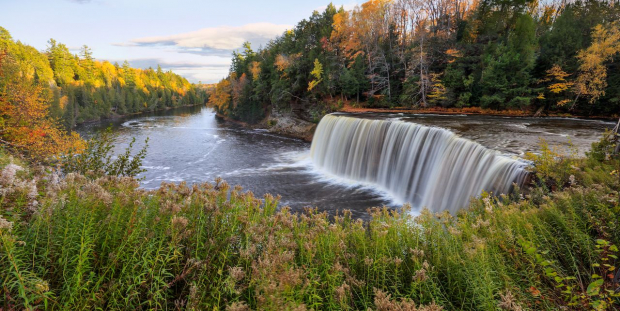
Tahquamenon Falls, Michigan
Tahquamenon Falls can be two or six falls, depending on your perception. Upper Falls- a 50-foot drop, 200 feet across- is considered more dramatic than Lower Falls, where five tiny cascades descend around an island. Also known as “Root Beer Falls”, tannins from local cedar swamps have turned the water a vibrant shade of brown. You can find a rowboat to access the island in the 50,000-acre Tahquamenon Falls State Park (and you can actually play in the falls on that island), or you can choose to scope out views from the trail along the riverbank. Here, you’re also pretty close to Lake Superior, on the eastern side of Michigan’s Upper Peninsula.
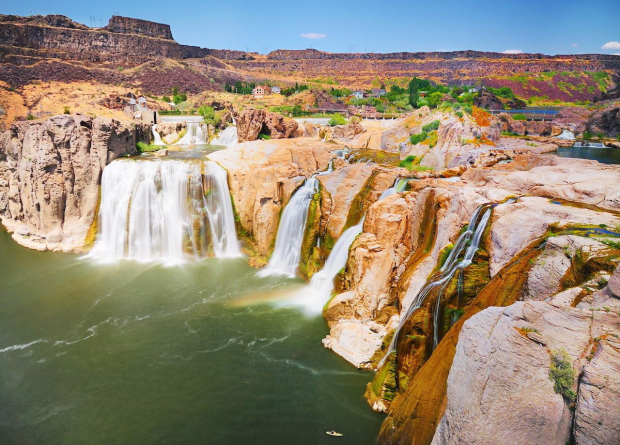
Shoshone Falls, Idaho
Also known as the “Niagara of the West” -but 45 feet taller- the Snake River’s Shoshone Falls is absolutely breathtaking. Formed during a gigantic Ice Age flood, the 900-foot-wide cascade has carved out a basalt canyon just a little bit east of Twin Falls, Idaho, flowing exceedingly all the way to the Columbia River. (Side note: That basalt comes from prehistoric Yellowstone eruptions). Due to irrigation diversion, Shoshone Falls is best viewed during the spring season, when the cascades gush at 20,000 cubic feet per second.
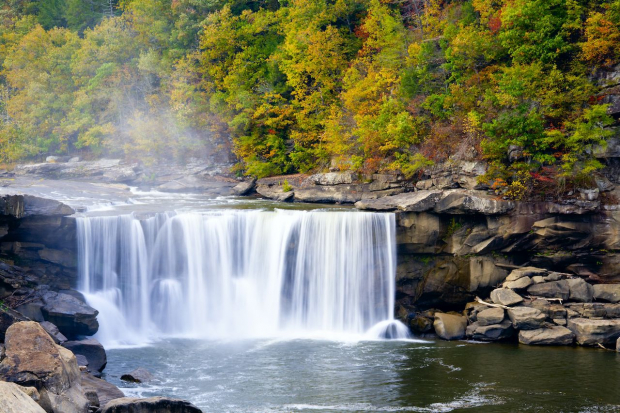
Cumberland Falls, Kentucky
At 65 feet tall and 125 feet wide, Cumberland Falls is the second-biggest waterfall east of the Rockies. However, silver medaling in the waterfall game isn’t what Cumberland is famous for. Actually, it’s famous for its moonbows. They can be seen on clear nights on either end of the full moon- the only place in the Western Hemisphere where this visual phenomenon occurs on a regular basis. Even though it’s comfortably accessible via the Cumberland Falls State Resort Park, it’s also possible to raft the Cumberland River- in the Daniel Boone National Forest- for up-close views of the cascade. While absolutely gorgeous in the daylight, the moonbows are a sight to be seen.
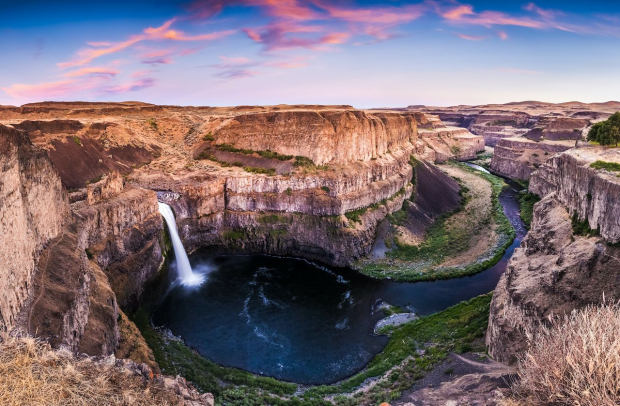
Palouse Falls, Washington
Out of Eastern Washington’s prehistorical lava beds and dry scablands pops Palouse Falls, a spectacular cascade that drops 200 feet into a swirling, churning bowl of water at its base. It’s one of the only remaining waterfall remnants of the Ice Age floods, a series of disastrous events that struck time and time again over 2,000 years. The gorge into which it spills provides incredible views when you take a look at it from the parking lot. There are a couple of short and nice hikes from here. More challenging treks can be taken down into the canyon. Side note: The road in is a difficult one- take it slow or get a high-clearance vehicle.
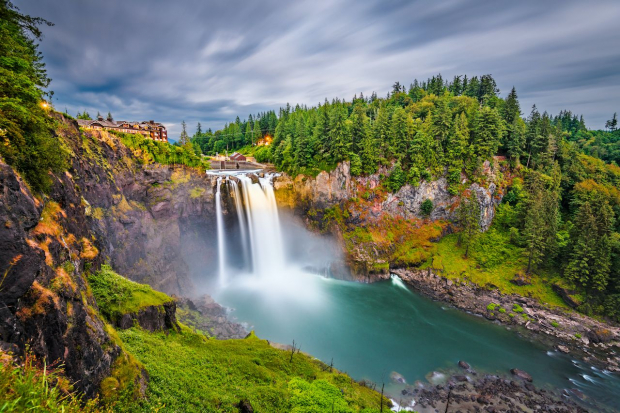
Snoqualmie Falls, Washington
Twice as high as Niagara, Snoqualmie attracts more than 1.5 million visitors every year, making it Washington’s second-most-popular attraction (after Rainier). There’s a good chance you might have seen this place in Twin Peaks. In 2019, the Snoqualmie community bought the onsite lodge, the falls, and the surrounding 45-acre area, reclaiming it as their own, which it had been for centuries. This is a holy place- if you decide to visit, keep this history in mind.
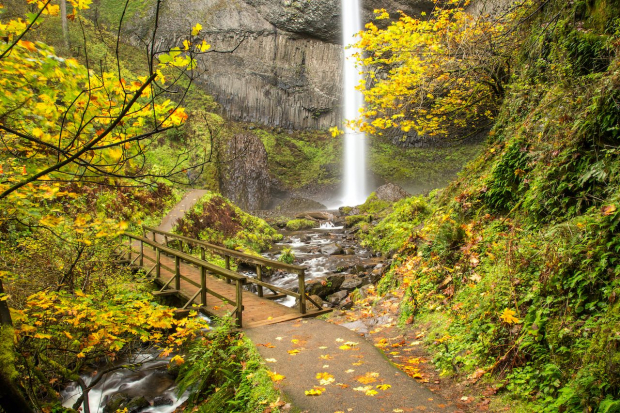
Latourell Falls, Oregon
On the Historic Columbia River Scenic Byway- a 70-mile stretch right on the east of Portland, Oregon- resides Multnomah Falls, an absolute jewel. It’s also Oregon’s most popular natural attraction, and an empty parking lot can be a challenge to find right after it opens. But 90 waterfalls-yes, 90, you read that right-alight this stretch; skip Multnomah until the crowds fade, and just spend your time exploring the rest of this historic route, instead. Of these 90, Latourell is one of the greatest and comfortably accessible falls off the road. You can reach there after a short hike, and a longer, uphill stretch takes you closer to the top.
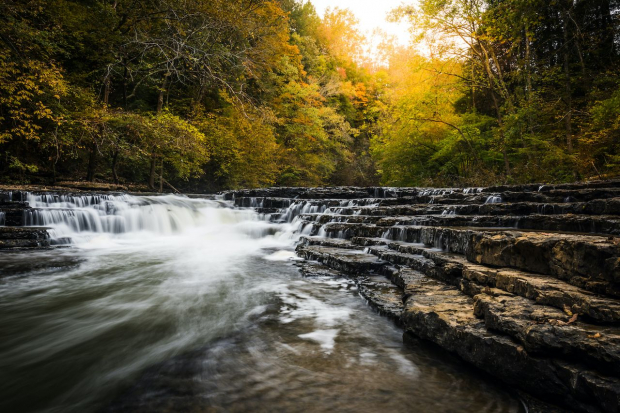
Burgess Falls, Tennessee
Less than 90 minutes from Nashville, Burgess Falls tumbles down the suitably named Falling Water River. It spills immensely for 136 feet into the bottom of a limestone gorge- gorgeous 150-foot cliffs line both sides. Burgess State Park is technically made up of four waterfalls, however, it’s the last of these that’ll make you pull off I-40. Trails of several different difficulties meander along the river and to an amazing viewpoint of the falls.
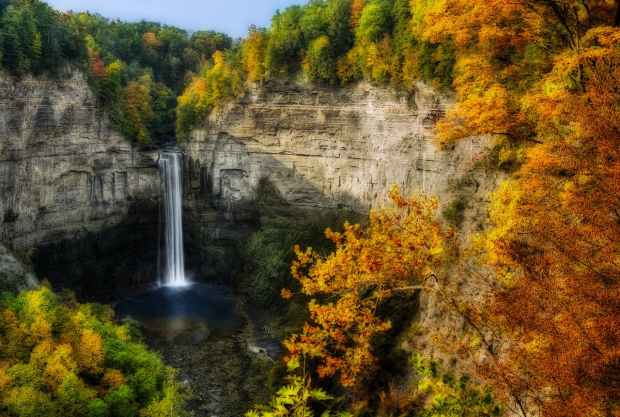
Taughannock Falls, New York
Pronounced tuh-GA-nick, this is the highest single-drop waterfall that’s located in the east of the Rockies. It’s 215 feet tall, which means it’s 33 feet taller than Niagara. And Taughannock Falls State Park, roughly 10 miles north of Ithaca, doesn’t really have manufactured attractions, crowds, and long lines. You only need to take a short hike to the Gorge Trailhead that is about 0.75 miles (you’ll find a place to park your car on NY-89). For a bit of a longer trek, the 1.5-mile North Rim Trail and 1.2-mile South Rim Trail split from the Gorge Trail, are also good places to get a good view of the falls.
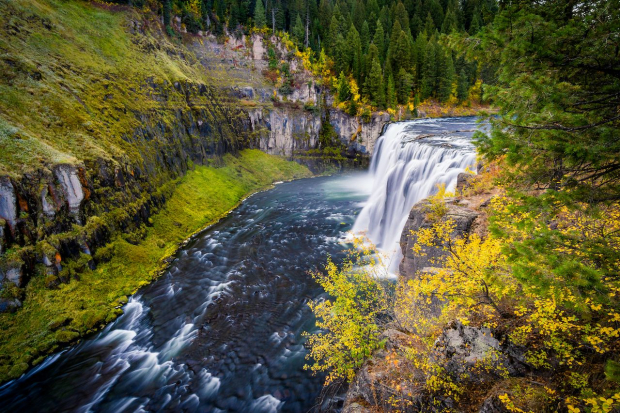
Upper Mesa Falls, Idaho
A curtain of water about the size of a 10-floor building cascades over a bed of volcanic rock at Upper Mesa Falls- and only a mile south, Lower Mesa Falls pretty much does the very same thing. The Mesa Falls Scenic Byway winds for roughly 30 miles along vistas like these, through the Targhee National Forest, and close to Yellowstone National Park. Note: The majority of the Snake River- where you’ll find the falls- has been wrangled and wrestled into submission by man, however, not Upper and Lower Mesa Falls.
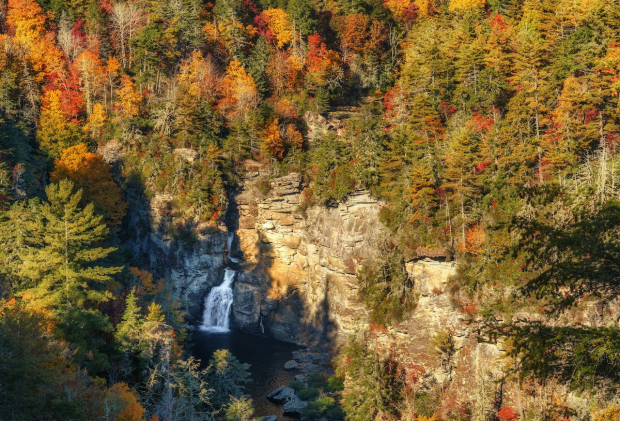
Linville Falls, North Carolina
The most well-known waterfall in the Blue Ridge Mountains- and close to the Blue Ridge Parkway- the three-tiered Linville Falls is the focal point of the already stunning Linville Gorge. Suitably, three different trails (from easy to difficult) snake around the gorge, from the base of the falls to the very tip-top.
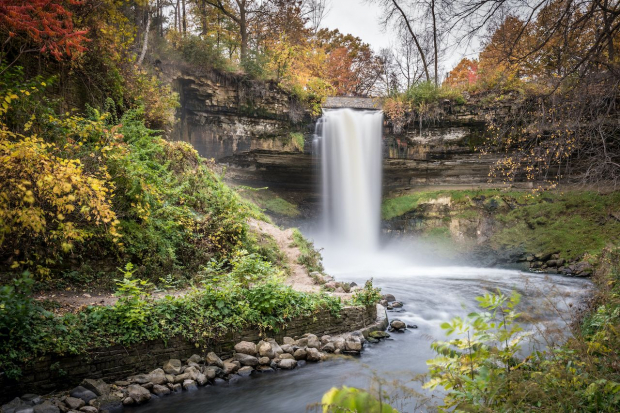
Minnehaha Falls, Minnesota
One of the several waterfalls smack dab in the center of a city, Minnehaha Falls flows for 53 feet in Minneapolis’ oldest park (and one of the oldest state parks in the country), surrounded by limestone bluffs and groves of oak, elm, and silver maple. Minnehaha Park stands on top of Mississippi, part of Minneapolis Grand Rounds- commonly considered as one of the best urban park systems in the world.

